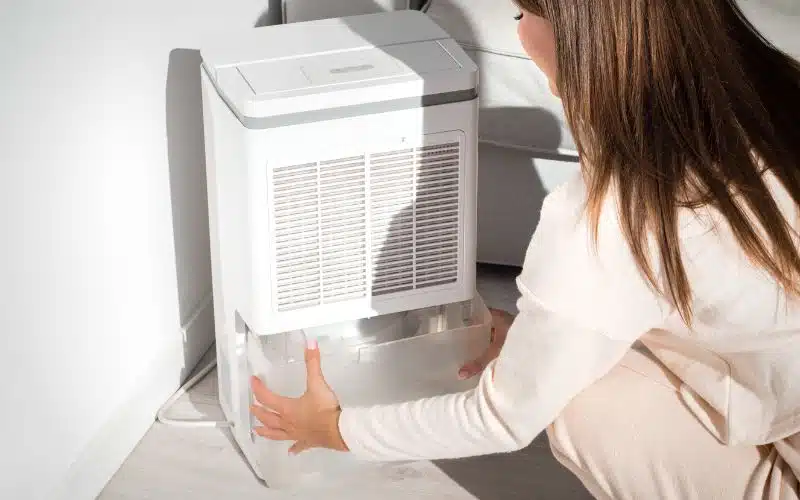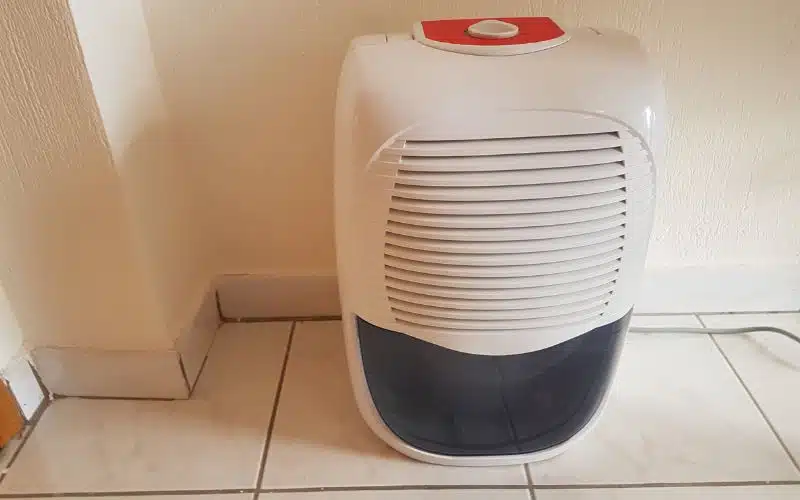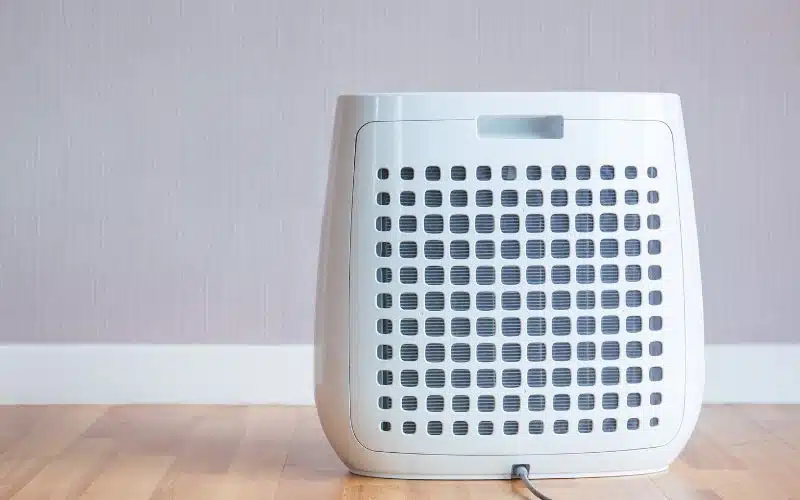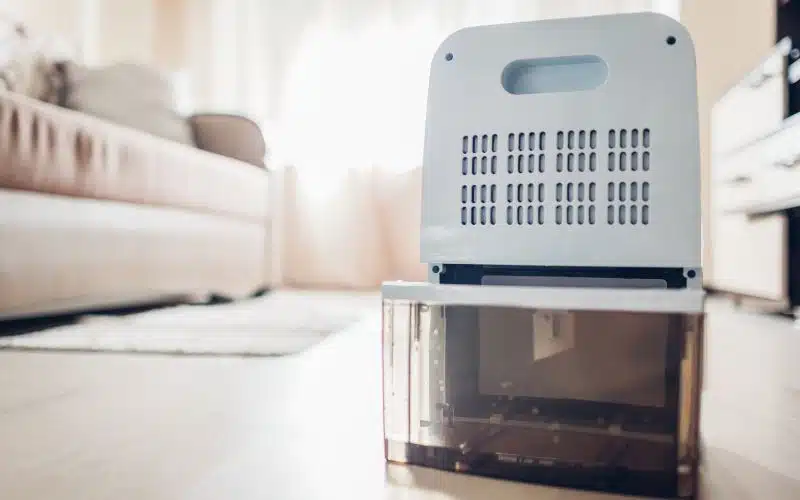Excess humidity in the room can cause discomfort, mold growth, and various health issues.
Thankfully, technology now offers a solution in the form of dehumidifiers, and Hisense dehumidifiers are among the most reliable ones.
Hisense dehumidifiers play a key role in maintaining indoor humidity levels, and understanding how it works is necessary to ensure effective operation.
So, if you are looking for a guide that explains how a Hisense dehumidifier works, look no further; you are in the right place!
A Hisense humidifier employs a simple yet efficient process to remove excess moisture from the air. A hisense dehumidifier draws in moist air from the environment, condenses the moisture into water droplets, and releases drier air back into the room. This process helps reduce the humidity level in the room, resulting in a more comfortable and healthier living environment.
In this article, I will explain the mechanisms that enable a Hisense to extract moisture from the air and create a safer and healthier environment.
By the end, you will discover the entire process by which a Hisense dehumidifier works.
How Does a Hisense Dehumidifier Work?
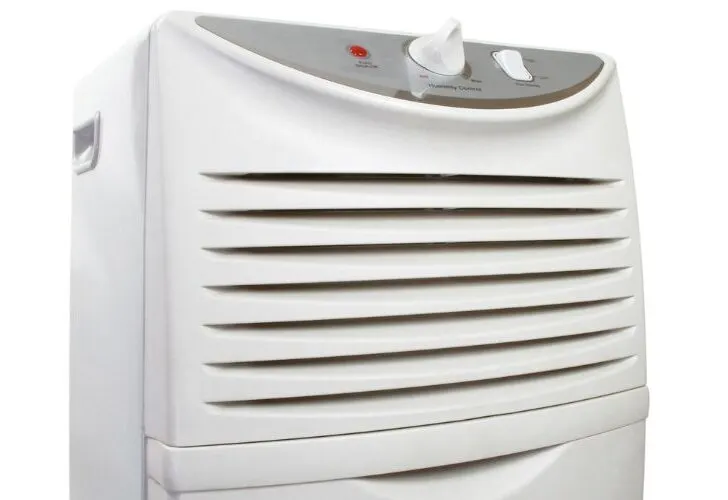
A Hisense dehumidifier operates as a valuable tool to regulate indoor humidity levels effectively.
It’s a clever device designed to make your surroundings more comfortable by reducing excess moisture from the air.
To understand how a Hisense dehumidifier works, you first need to know its primary components: a fan, a compressor, a cooling coil, and a water collection tank.
So, here’s how a Hisense dehumidifier works:
#1. Air Intake
The process starts with the dehumidifier’s air intake. The dehumidifier draws in moist air from the room and directs it across the cooling coil using the fan.
The air often contains invisible water vapor that makes the environment feel damp.
#2. Cooling Coil
The next step is to cool down the incoming air. Inside the dehumidifier are cooling coils, also called evaporator coils, that work similarly to those in a refrigerator.
As the warm, humid air passes over these coils, the coils chill the air, and as the air cools, it loses the ability to hold moisture.
This process causes the water vapor in the air to condense into water droplets.
#3. Condensation
The condensed water droplets gather on the cooling coil’s surface. Think of it like a glass of cold water on a warm day; water droplets form outside the glass.
In the dehumidifier, these water droplets fall into a collection tray or bucket beneath the coil.
#4. Compression, Heating, and Evaporation
The compressor is responsible for maintaining a cycle of cooling and heating.
It compresses the low-pressure, low-temperature refrigerant gas created during the condensation process. This compression causes the gas to heat up significantly.
The hot, pressurized refrigerant gas then moves to the condenser coils outside the dehumidifier.
Here, the refrigerant releases the heat it gained during compression and cools down, causing it to condense into a high-pressure liquid.
Then, the high-pressure liquid refrigerant flows through an expansion valve, speedily decreasing its pressure.
This sudden reduction in pressure causes the refrigerant to evaporate and turn into a low-pressure, low-temperature gas once again.
#5. Cooling and Dehumidification
The cooled refrigerant gas cycles back to the cooling coil inside the dehumidifier.
As the warm, humid air flows over the cooling coil, the refrigerant absorbs the heat and moisture from the air, starting the process anew.
#6. Water Collection
As the dehumidifier works, water collects in the collection tray or bucket, and you need to empty it periodically.
Some models even have a hose attachment option, so the collected water can continuously drain.
#7. Air Circulation
The dehumidifier’s fan continuously circulates the air in the room.
This process helps ensure that all the air in the room passes through the dehumidification process, effectively reducing overall humidity levels.
So, in a nutshell, a Hisense dehumidifier cools down and extracts moisture from the air, then releases the dry, slightly warmed air back into the room.
This process helps you feel more comfortable and also helps prevent issues like mold growth, musty odors, and health issues caused by excessive humidity.
What Do Hisense Dehumidifier Pumps Do?
Hisense dehumidifier pumps are innovative devices designed to manage indoor humidity levels efficiently.
They are one of the components of a humidifier that play a crucial role in creating a comfortable and healthy living environment by reducing excess moisture in the air.
One of the standout features of Hisense dehumidifier pumps is their ability to automatically expel collected water through a built-in pump system.
This process is particularly useful when the unit needs to drain continuously, such as in basements or crawl spaces.
The pump system allows the dehumidifier to effectively remove large amounts of moisture without needing constant manual intervention.
Pumps are especially beneficial in regions with high humidity levels, as excess moisture can lead to mold growth, dust mites, and other allergens.
By maintaining optimal humidity levels, Hisense dehumidifier pumps help prevent these issues and create a more comfortable indoor environment.
Furthermore, Hisense dehumidifier pumps often come with user-friendly controls and smart features.
Some models contain digital displays, adjustable humidity settings, and timers, allowing users to customize the dehumidification process according to their preferences.
This feature enhances convenience and enables energy savings by preventing excessive operation.
In addition to residential settings, Hisense dehumidifier pumps are useful in commercial spaces like offices, storage areas, server rooms, etc.
In such settings, the dehumidifier helps maintain proper humidity levels to safeguard equipment and maintain a comfortable working environment.
The ability of Hisense dehumidifiers’ pumps to extract excess moisture, coupled with pump systems, makes them indispensable devices for managing humidity levels in various settings.
Whether in a home, office, or other space, these pumps create a more enjoyable and healthier living.
At What RH Should You Set Your Hisense Dehumidifier?
The optimal relative humidity level for indoor comfort and health usually falls between 30% and 80%.
This range suits most climates and helps prevent high and low humidity issues.
A higher percentage of relative humidity indicates more moisture in the air, while a lower percentage means the air is drier.
Your humidifier’s RH setting must not be above 80% nor below 30%, as any of these may result in discomfort.
Excess humidity (above 80%) can create a breeding ground for mold, dust mites, and other allergens, leading to respiratory problems and allergic reactions.
It can also make the air feel sticky and uncomfortable.
Low humidity (below 30%) can cause dry skin, irritated eyes, and aggravated respiratory conditions.
Wooden furniture and musical instruments may also crack or warp due to excessive dryness.
Therefore, to achieve the correct relative humidity level in your environment, follow the instructions below:
- Determine Your Current RH: Use a hygrometer to measure the relative humidity in your living space.
- Choose the Ideal RH: Aim for a level between 30% and 80% for optimal comfort and health benefits.
- Adjust the Dehumidifier Settings: Most Hisense dehumidifiers allow you to set a target humidity level. Use the controls to adjust the settings accordingly.
- Monitor and Maintain: Regularly check the humidity levels using the hygrometer and adjust the dehumidifier settings as needed.
Check the table below to discover the differences between excess and minute RH in Hisense dehumidifier and their repercussions:
| Excess RH | The air feels too dry. |
|---|---|
| The RH is above the recommended range. | The RH is below the recommended range. |
| Air feels muggy. | The air feels muggy. |
| It results in discomfort and stickiness. | It can cause dry skin and respiratory problems. |
| The atmospheric odors become stronger. | The atmospheric odor was reduced. |
| The dehumidifier works more and increases energy bills. | The dehumidifier works less. |
So, by setting your Hisense dehumidifier at the correct RH, you’ll create a more comfortable living environment and be free from the problems caused by excess and low humidity levels.
How Do You Drain a Hisense Dehumidifier?
Regularly draining your Hisense dehumidifier is essential to ensure its optimal performance and longevity.
You must first understand the various draining options to drain your Hisense dehumidifier effectively.
Hisense dehumidifiers typically offer two main methods for draining water: manual and continuous.
For models without a built-in pump, manual draining involves removing the water collection bucket, emptying it, and placing it back into the dehumidifier.
On the other hand, many Hisense dehumidifiers contain a built-in pump and a drain hose.
Such models allow you to connect the hose to a suitable drainage point, such as a floor drain or a sink, enabling the unit to empty itself automatically.
So, to drain a Hisense humidifier, follow the instructions below:
First, ensure you have the following items:
- Water collection bucket (if applicable).
- Drain hose (if applicable)
- A suitable drainage point (for continuous draining)
- Towel or cloth
If your Hisense dehumidifier doesn’t have a built-in pump and requires manual draining:
- First, turn off the dehumidifier and unplug it from the power source.
- Locate the water collection bucket, usually at the front or rear of the unit.
- Carefully pull out the bucket and hold it steady.
- Empty the collected water into a sink or a container suitable for carrying water.
- Wipe the inside of the bucket with a clean cloth to remove any residue.
- Slide the bucket back into its designated position until it clicks into place.
- Plug in the dehumidifier and power it on.
For Hisense dehumidifiers with a built-in pump and continuous draining capability:
- First, turn off the dehumidifier and unplug it.
- Locate the drain hose outlet on the dehumidifier. It is often at the back or bottom.
- Attach one end of the drain hose securely to the outlet.
- Position the other end of the hose over a suitable drainage point, ensuring it has a downward slope to facilitate water flow.
- Secure the hose in place if necessary to prevent it from moving.
- Plug in the dehumidifier and turn it on. The unit will automatically pump out the collected water through the hose.
Draining your Hisense dehumidifier regularly is a crucial maintenance task that ensures optimal performance and prevents water overflow.
Depending on the model, you can choose between manual and continuous draining methods.
In addition, remember to consult your Hisense dehumidifier’s user manual for model-specific instructions and safety precautions.
Do Hisense Dehumidifiers Have Remote Controls?
Yes, Hisense dehumidifiers have remote controls. This feature enhances users’ experience by allowing them to operate the device from a distance.
The remote control functionality of Hisense dehumidifiers is especially beneficial in larger rooms or areas where accessing the dehumidifier directly might be inconvenient.
With the remote control, you can adjust settings, change fan speeds, set timers, and even power the device on or off without physically approaching the appliance.
